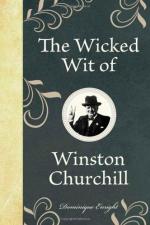|
This section contains 7,208 words (approx. 25 pages at 300 words per page) |

|
SOURCE: “The Enigmatic Ends of Rhetoric: Churchill's Fulton Address as Great Art and Failed Persuasion,” in Quarterly Journal of Speech, Vol. 83, No. 4, November 1997, pp. 416-28.
In the following essay, Hostetler explicates Churchill's “Sinews of Peace” speech.
March 5, 1996, marked the fiftieth anniversary of one of the definitive speeches of the twentieth century, Winston Churchill's address at Westminster College in Fulton, Missouri. Fraser J. Harbutt claims that as a “creative work of art,” the speech provided “true and instant illumination” by giving “first authoritative public utterance to many of the leading political and ideological themes of the coming Cold War.” In addition, it was “a brilliant exercise in political prophecy” (183-184). According to Lynn B. Hinds and Theodore O. Windt, Jr., the former Prime Minister's address “sowed the seeds for a rhetorical process that was to blossom into a new world order, a new political reality” (100). The editor of Churchill's...
|
This section contains 7,208 words (approx. 25 pages at 300 words per page) |

|


